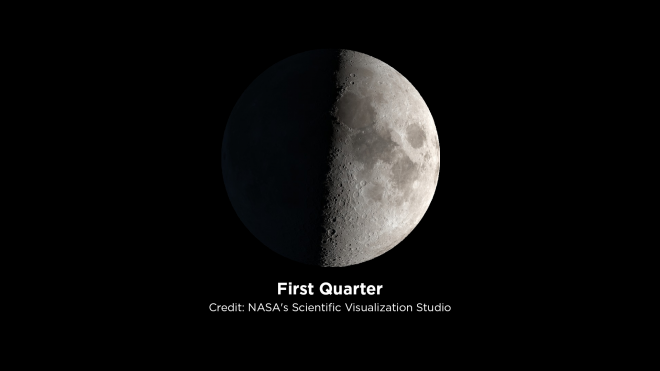Why the Oct. 5th Observe the Moon Night is misnamed
September 27, 2019
By Amy Sayle
When is the Moon in the sky?
We often ask field trip groups this question as we introduce Morehead’s planetarium show Earth, Moon and Sun. The kids usually yell out “nighttime!”
But is the Moon always up at night? Is it up all night long? Is it never up in the day?
You might think so if you hear the ending of a particular Lithuanian story about the Sun and Moon. According to this story, Sun and Moon originally lived together in the sky. They fell in love and had a baby, Earth.

Over time, they began to argue over their differences. Sun liked the things of day, such as heat and light. But Moon liked the things of night, such as cold and dark.
They decided to separate. But who would watch over Earth? Sun said Moon couldn’t do it, because Earth would be too cold and it’d be dark all the time. Moon said Sun couldn’t do it, because Earth would be too hot and it’d be light all the time.
They sought wise counsel from Thunder, who proposed joint custody: Sun would watch over Earth in the day, and Moon would watch over Earth at night.
In fact, sometimes Moon does watch over Earth all night—but only once a month, when the Moon is full. A full moon is in the part of its orbit around Earth in which the Moon lies opposite the Sun in the sky. Therefore, a full moon is up only when the Sun isn’t: all night.
The situation is the other way around a couple of weeks later, at new moon. That’s when Moon reconciles with Sun and is with the Sun in the sky. Therefore, a new Moon is up only when the Sun is up, too: all day. (You won’t actually see a new moon, though, because the Sun lights only its far side.)
When it’s any other phase, the Moon is up partly in the day, partly at night. That’s the situation on International Observe the Moon Night, on October 5, 2019.
On that day, the Moon is first quarter. It’s a quarter of the way in its orbit around Earth, halfway between its new and full phases, and it’ll appear half lit. A first quarter moon rises roughly at mid-day, is high in the sky around sunset, and sets around midnight.
So this year’s International Observe the Moon Night might better be called International Observe the Moon Afternoon and Evening.
You can celebrate the Moon with us on that afternoon and evening (Saturday, October 5, 2019):
- Hear Moon stories from around the world and learn Moon science inside Morehead’s fulldome theater, at Star Families: The Moon, from 3:30-4:15 pm.
- If the weather permits, join us at Dorothea Dix Park for skywatching from 7:30-9:30 p.m. View the Moon and other celestial objects through telescopes, take a guided tour of the night sky, and listen to stargazing music provided by the Triangle Sax Ensemble. The park requests that you register online for this free event so they can estimate attendance and contact you with any weather-related cancellation notice.
Check here for upcoming skywatching sessions at Dorothea Dix Park.
Story credit: The Lithuanian story told here is modified slightly from a version appearing in The Man in the Moon: Sky Tales from Many Lands, by Alta Jablow and Carl Withers, illustrated by Peggy Wilson. You can find this book at UNC Libraries.
